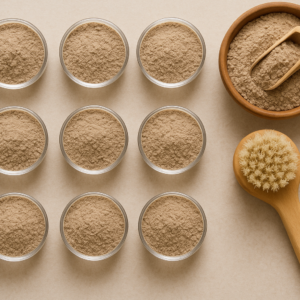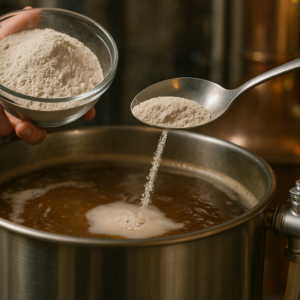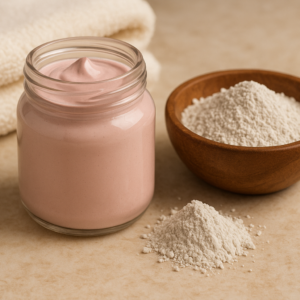Are you concerned about the potential health risks of sodium bentonite in your cat’s litter box? You’re not alone. With growing awareness about pet safety and environmental impact, many Indian cat owners are seeking safer alternatives for their feline companions. The good news is that effective clumping cat litter without sodium bentonite options exist, and choosing the right one doesn’t have to be complicated.
While sodium bentonite has been the go-to clumping agent for decades, recent studies have raised concerns about dust inhalation and potential digestive issues when cats groom themselves after using the litter box. This comprehensive guide will help you navigate the world of alternative clumping litters, ensuring your cat’s health and comfort remain top priorities.
Understanding Why Pet Parents Are Moving Away from Sodium Bentonite
Sodium bentonite is a type of clay that swells significantly when it comes into contact with moisture, creating those familiar hard clumps in traditional cat litter. However, this same property that makes it effective can potentially pose health risks.
When cats use sodium bentonite litter, microscopic particles can stick to their paws and fur. During grooming, these particles may be ingested, potentially causing digestive issues over time. Additionally, the fine dust created during pouring and scooping can irritate both human and feline respiratory systems.
For Indian households, where cats often spend significant time indoors due to climate and urban living conditions, choosing a safer clumping cat litter becomes even more crucial. The enclosed nature of most Indian homes means that any dust or particles from litter have less opportunity to disperse naturally.
Natural Alternatives to Sodium Bentonite for Clumping Action
Calcium Bentonite: A Gentler Clay Option
Calcium bentonite offers a middle ground for cat parents who want to stick with clay-based litters but avoid sodium bentonite’s risks. This naturally occurring clay provides moderate clumping ability while producing significantly less dust. While it may not form as tight clumps as its sodium counterpart, calcium bentonite is gentler on sensitive respiratory systems.
The key advantage of calcium bentonite lies in its lower swelling capacity, which reduces the risk of digestive complications if small amounts are accidentally ingested during grooming. For Indian cat owners dealing with dust sensitivity—a common concern in many urban areas—this can be a practical compromise.
Plant-Based Clumping Solutions
Corn-Based Litters
Made from processed corn kernels, these litters use natural starches to create clumping action. Corn-based options are completely biodegradable and safe if accidentally consumed in small quantities. They’re particularly suitable for Indian households practising composting, as they can be safely added to compost bins.
Wheat-Based Alternatives
Wheat litter utilises natural wheat enzymes to control odour and create clumps. These litters are especially appealing to environmentally conscious cat parents, as they’re made from renewable agricultural resources. However, cats with grain sensitivities may not tolerate wheat-based options well.
Tofu and Soy-Based Litters
Increasingly popular in Indian metro cities, tofu litter is made from processed soybeans. It offers excellent clumping properties and is completely flushable in small quantities, making it convenient for apartment living. The natural proteins in soy also provide superior odour control compared to many traditional alternatives.
Wood-Based Clumping Litters
Wood pellet litters made from compressed sawdust offer a natural alternative that’s particularly suitable for cats with respiratory sensitivities. When moisture is added, the pellets break down into absorbent sawdust that can be easily removed. While not forming traditional clumps, wood litters provide excellent odour control and are completely biodegradable.
Paper-Based Options
Recycled paper litters, while not offering traditional clumping action, provide excellent absorption and are incredibly gentle on sensitive paws. They’re particularly recommended for cats recovering from surgery or those with respiratory issues.
Key Factors to Consider When Choosing Clumping Cat Litter Without Sodium Bentonite
Clumping Effectiveness
Look for litters that form solid, easy-to-scoop clumps without breaking apart. The clumping action should be strong enough to prevent liquid from seeping to the bottom of the litter box, but not so aggressive that it creates cement-like formations.
Dust Levels
Low-dust formulations are essential for maintaining good air quality in your home. This is particularly important in Indian households where air quality can already be compromised by external factors. Always pour new litter slowly and consider wearing a mask during litter changes.
Odour Control Capabilities
Without sodium bentonite’s natural odour-trapping properties, alternative litters must rely on other mechanisms for smell control. Look for products that use natural enzymes, activated carbon, or plant-based deodorising agents rather than artificial fragrances.
Absorption Rate
The litter should quickly absorb moisture to prevent bacterial growth and odour development. This is especially important in India’s humid climate, where moisture can linger longer than in drier environments.
Tracking and Scattering
Choose litters with larger granules or those specifically designed to reduce tracking. This helps maintain cleanliness around the litter box area and reduces the amount of litter particles spread throughout your home.
Health and Safety Considerations for Indian Cat Owners
Respiratory Health
India’s air quality challenges make respiratory health a particular concern for both cats and their owners. Clumping cat litter without sodium bentonite options typically produce less dust, supporting better indoor air quality. Always transition gradually to new litters to allow your cat’s respiratory system to adjust.
Digestive Safety
Natural, plant-based litters pose minimal risk if accidentally ingested during grooming. This is particularly important for cats with compulsive grooming behaviours or those who are naturally curious about their litter.
Paw Sensitivity
Some cats develop sensitivity to certain clay types. Alternative litters are often gentler on paw pads, reducing the risk of irritation or allergic reactions.
Environmental Impact and Sustainability
Biodegradability
Unlike sodium bentonite, which doesn’t break down naturally, many alternative litters are completely biodegradable. This is particularly relevant for Indian households looking to reduce their environmental footprint.
Renewable Resources
Plant-based litters utilise renewable agricultural resources, supporting sustainable practices. This aligns with India’s growing focus on environmental responsibility and waste reduction.
Compostability
Many natural litters can be composted, though waste should never be added to compost used for food plants. This option is particularly attractive for Indian households with garden spaces.
Making the Transition: Tips for Success
Gradual Introduction
Mix small amounts of the new litter with your current product over 7-10 days. This gradual approach helps your cat adjust to the new texture and scent without causing litter box avoidance.
Multiple Box Strategy
If you have multiple cats, consider introducing the new litter in just one box initially. This allows cats to choose their preference while ensuring continued litter box use.
Monitoring and Adjustment
Watch for signs of acceptance or rejection, including changes in litter box habits, paw licking, or respiratory symptoms. Adjust your choice based on your cat’s response.
Cost Considerations and Value Assessment
While alternative litters may have higher upfront costs, many offer better value through superior absorption and reduced waste. Calculate the true cost per use rather than just the package price.
Consider the long-term health benefits and potential veterinary cost savings when evaluating different options. Investing in your cat’s health through safer litter choices can prevent costly medical issues down the road.
Conclusion
Choosing clumping cat litter without sodium bentonite doesn’t mean compromising on performance or convenience. With numerous natural alternatives available in the Indian market, cat parents can prioritise their pet’s health while maintaining effective litter box management.
Whether you opt for calcium bentonite, plant-based options, or innovative natural alternatives, the key is finding a product that meets your cat’s specific needs while aligning with your values and lifestyle. Remember that the best litter is one that keeps your cat comfortable, healthy, and happy to use their litter box consistently.
For expert guidance on cat care products and natural alternatives, explore the comprehensive resources available at CMS Industries, where quality and pet safety remain top priorities in product development and recommendations.
Frequently Asked Questions
Q1: Is clumping cat litter without sodium bentonite as effective as traditional clay litter?
Yes, many natural alternatives provide excellent clumping action and odour control. While performance may vary slightly, most cat owners find plant-based and calcium bentonite options meet their needs effectively.
Q2: Are natural clumping litters safe for kittens?
Natural litters are generally safer for kittens than sodium bentonite options. However, very young kittens may still ingest litter during exploration, so supervise usage and consult your veterinarian.
Q3: How often should I change natural clumping cat litter?
Change natural litters completely every 2-3 weeks with daily scooping. Some natural options may require slightly more frequent changes due to different absorption properties compared to sodium bentonite.
Q4: Can I flush natural clumping cat litter?
Only certain types like tofu-based litters are flushable in small quantities. Never flush clay-based alternatives, and always check local plumbing guidelines before flushing any litter products.
Q5: Why is my cat rejecting the new sodium bentonite-free litter?
Cats may need time to adjust to different textures and scents. Ensure gradual transition, maintain consistent litter box cleanliness, and consider trying different natural alternatives to find your cat’s preference.







